I’ve deliberately rerun the Bartold’s Grove post immediately after the rerun of the post about Sutton’s Cave because of the cave connection. I’m talking about the cave connection as a subject and not as an underground passage but who knows? Brian Peters posted a fascinating comment after the first Sutton’s Cave posting. It is reprinted below with my response.
Brian Peters
8:09 pm on Monday, June 25, 2012
I brought this story up to my father, and SURPRISE TO ME. As a child, my father and his friends used to play in these caves. This was likely in the late 1940’s early 1950’s. He told me some very interesting things about the cave. The article is correct, it is VERY large. My father said that they would enter at a certain place near Sutton and Manchester and that they would walk west towards Brentwood. (there was also mention about a former bank in Maplewood who’s vault backed up to the cave, so at a certain point you could see a smooth concrete wall…I don’t think it’s a bank anymore, but this is what my father told me) They would tie off a small rope, in case they had to go this way or that.
The cave as he knew it stretched all the way along Manchester Road into Brentwood (just west of the new Schnucks there) where they would exit. He recalls that the cave seemed to extend further west toward Rock Hill, but that they never went that way. They stuck to what they knew. He said that some places could narrow down to crawlspaces, and in other areas, there could be waterholes that you would have to wade or swim through. He said if it had rained recently, it wasn’t a good idea to explore.
He also noted several exit points along the way. Something about a house that used to be on a hill at Brentwood and Manchester. The entrance was in front of the house, surrounded by bushes, and you would have to crawl on your hands and knees through the bushes to find the hole.
Reply Doug Houser
12:31 am on Tuesday, June 26, 2012
Brian, your comment is very interesting. Several points are nearly identical to ones in a story told to me by a retired Maplewood firefighter, Dewey Eberhardt, who was living in Shrewsbury when we last spoke.
According to Dewey a tunnel exists that runs from Citizen’s Bank in Maplewood to the NW corner of Brentwood and Manchester. There it surfaces and has a concrete cap. I’m fairly certain he was talking about a man made tunnel and not a natural cave. I forget what purpose this tunnel served.
Roughly midway between those two points was once the location of a roadhouse known as the Eight Mile House (8 miles from downtown St. Louis). It was later called Bartold’s Grove and was a popular hotel and resort. The hotel was located at the SE corner of present day Manchester and Hanley. The building was built in the 1840’s and survived into the 1950’s or possibly the early 60’s. The hotel was built into the hill below the present location of the Sunnen Corporation’s headquarters. It was 3 stories in front and walk out at ground level from the 3rd story in the rear.
I hadn’t thought about why it had been built in such a manner until the subject came up in conversation with one of the cavers mentioned above (Sutton Cave post). These passionate fellows search the historic record for mention of caves. He had noticed that the Bartold Inn had later been renamed as Cool Cave Tavern. There you have it. One of the features that made Bartold’s Grove such an attractive destination was its beer garden. The building must have backed up to a cave and may have taken advantage of the natural air conditioning as well as having a giant beer cooler close at hand.
Well, I was speculating. The last sentence I’d edit today to read “might have” instead of “must have”. It occurs to me that these three or possibly four caves are pretty much in line with one another. It seems unlikely that they are all connected or ever were. But it is definitely interesting how large or long they seem to be according to these accounts.
Doug Houser May 4, 2016
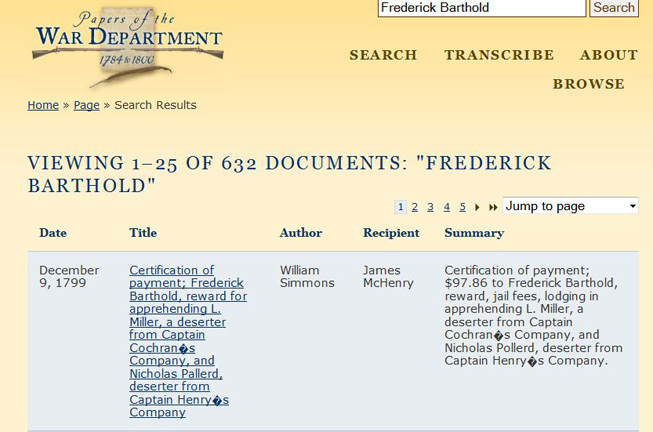
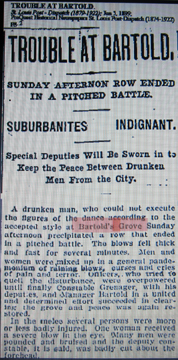
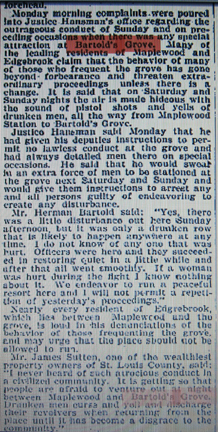
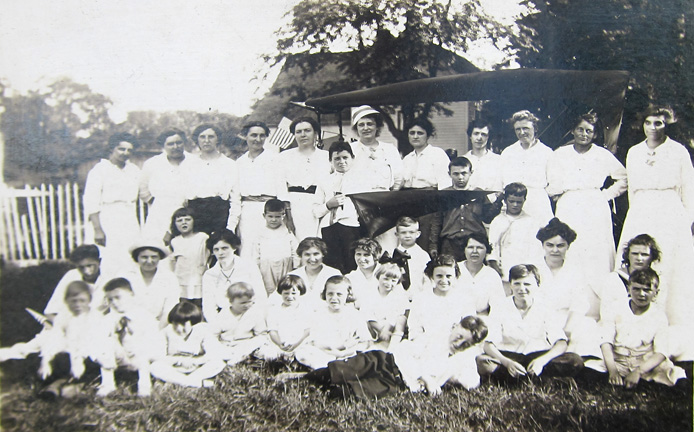
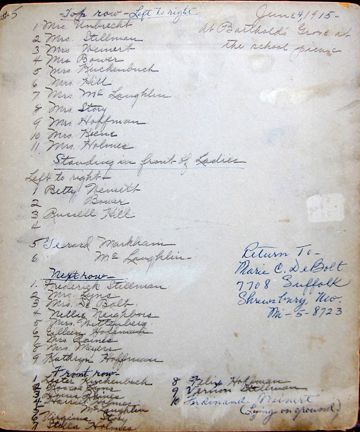
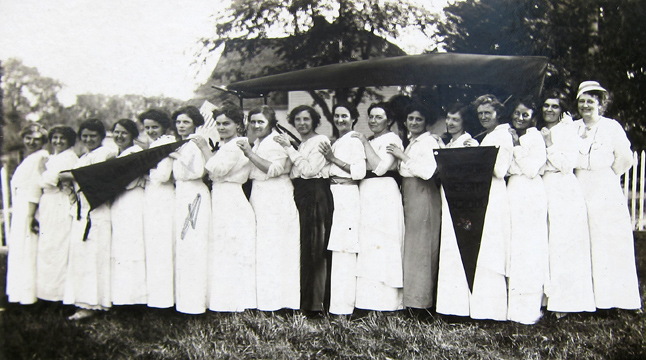
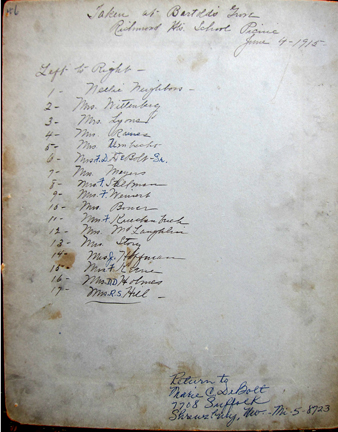
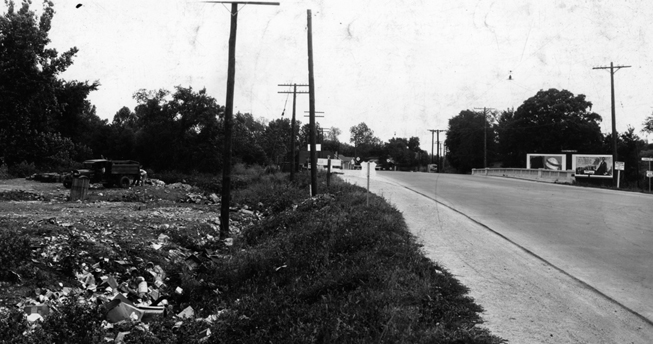
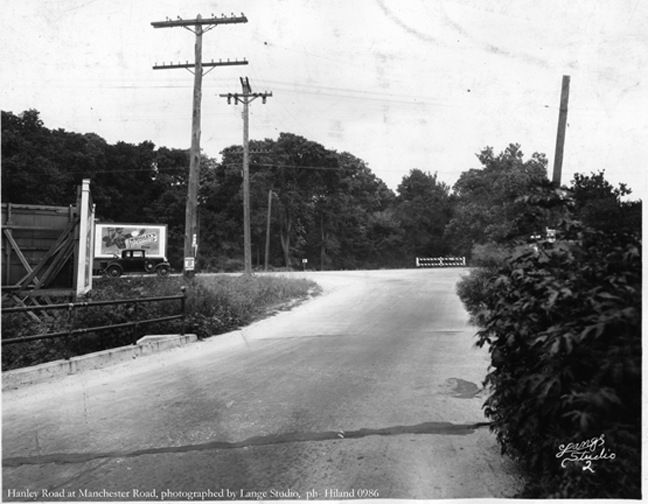
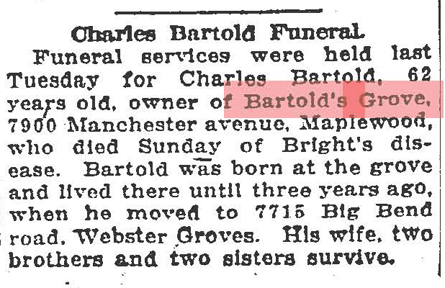

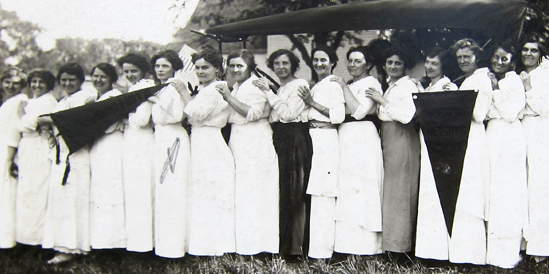
Doug,
I remember hearing stories of the cave and a natural spring that ran behind Bartold’s as the reason why it was so popular. At the time Manchester road was the only road out to the town of Manchester, Mo.
One great source of info if you haven’t tried yet is John H. Sanders, the longtime teacher at M-RH and coach. He still lives in Manchester and I believe is either near or just past 100 years old. He was full of info from back in the days.
Bill
Hey Bill, Thanks for adding to our knowledge of Bartold’s Grove. Thanks also for the tip about Mr. Sanders. I think I’ve met him. Wasn’t his nickname Howdy? If you or anyone has any contact info I’d love to talk to him.
The first or second Tues he has been at Uncles Bills pancake rest. on Manchester. A group meets from MRH meets out there.
Thanks for that information, Phil. A call to the restaurant might pin their meeting day down.
Just noticed this, Doug. “Edgebrook” should replace “Edgewood” in the quote: “Edgewood which lies between Maplewood and the grove”. Thanks for the spelunking info!
Thanks, Sherman, for pointing that out. I made the correction. And you are welcome.
Love it! I want a tour of the cave (no not really).
I feel exactly the same as you, Wanda. Maybe we could have one of those sewer guys run his camera through it? Then we could watch it on TV.
I would go in!
OK, Cathy, you can lead the tour. Call Wanda. She might have a change of heart. I won’t. I’m not going. Take lots of pictures.